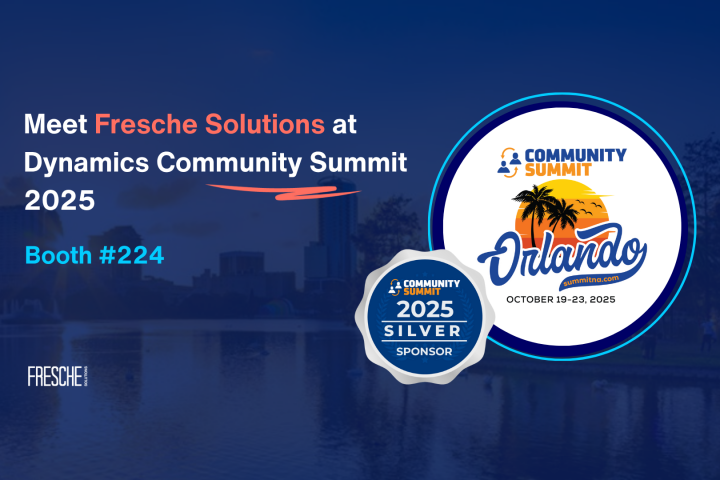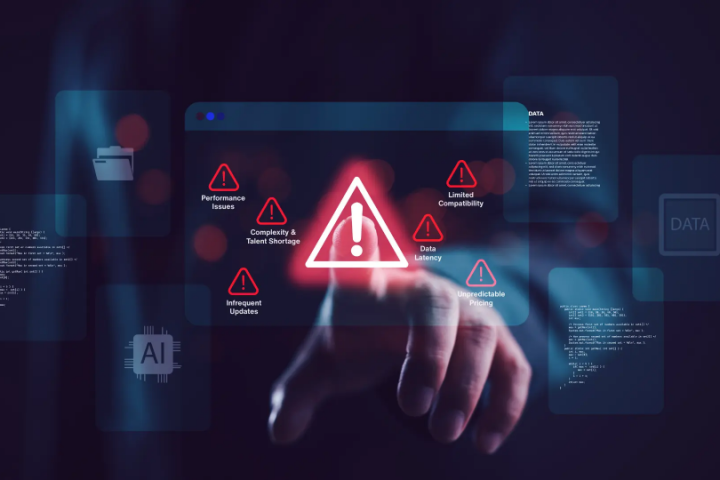
Most Teams Sit on Data They’re Not Using for Analytics.
Some store it in silos. Others wrestle with it in spreadsheets. Many don’t know where half of it lives.
That’s a huge problem. Because when your data isn’t working for you, your decisions are slower, your teams are reactive, and your tools fall short.
This is exactly the challenge Fresche set out to solve when it launched Fresche Analytics in early 2025, following its acquisition of OmniData. The goal? To pair decades of IBM i expertise with deep Microsoft analytics and cloud capability.
Now, as a Microsoft Solutions Partner, Fresche is helping companies modernize across both ecosystems, bringing legacy systems, cloud platforms, and modern analytics under one roof.
To introduce this new approach and show how it works in practice, Fresche hosted a webinar led by Joe Zarrehparvar, Tobias Eld, and Dan Erasmus—experts in analytics, cloud, and modernization.
They opened with a useful question:
Where are You in Your Analytics Journey?
Some teams are still collecting and cleaning data. Others are reporting but not predicting. A few are experimenting with AI, though unsure what it’s actually solving.
Each of these starting points requires a different next step. That’s what this webinar makes clear.
If your team has ever said:
- “We’ve got the data, but not the insights.”’
- “We’re stuck doing the same manual reports every month.”
- “Leadership wants AI, but we can’t even agree on the dashboard.”
Then the next 30 minutes might save you months of guesswork.
Modernization Helps Teams Work Better with What They Already Have
Many teams aren’t short on ideas. They’re blocked by infrastructure.
Old systems. Scattered databases. Tools that don’t connect. Reporting that depends on one person who knows where everything lives.
In the webinar, the team showed how companies are navigating this. A few examples stood out:
- A healthcare plan with over 300,000 members moved from rigid legacy reports to a more flexible cloud platform. Their analysts stopped fighting spreadsheets and started answering real questions.
- A private equity firm ingested data from multiple portfolio companies into one place. What used to take days now takes minutes.
- A global distributor built real-time dashboards for their operations team. What they saw surprised them. Orders were slowing down mid-shift. Now they can course-correct in real time.
None of these companies were chasing innovation for its own sake. They just wanted better visibility and faster decisions.
The Data & Analytics Maturity Curve
The hosts also discuss a practical model for evaluating how advanced your analytics really are:
- Foundational: Where’s the data?
- Descriptive: What happened?
- Diagnostic: Why did it happen?
- Predictive: What’s likely next?
- Prescriptive: What should we do?
- Cognitive: Can the system think with us?

Most companies stall in the “descriptive” stage. In this webinar, you can learn how to climb, one layer at a time, toward AI-powered forecasting, scenario modeling, and real-time insights.
Where Microsoft Fabric Fits In
Many companies in the audience already use Microsoft tools. Power BI. Azure. Excel.
So, when Microsoft launched Fabric, it got attention. And for good reason. It brings all those tools closer together. Data ingestion, transformation, modeling, visualization. It’s all in one place.
In the webinar, the presenters shared examples of how teams are using Fabric today. Some replaced manual pipelines with automated ones. Others used the data lakehouse setup to pull structured and unstructured data into the same workflow.
The goal was the same in each case: spend less time managing data, and more time using it.
AI Can Help. But Only if the Basics Are in Place
Everyone wants to try AI. But what most teams need first is a strong data foundation.
The webinar outlined a few common starting points:
- Organizing data across systems
- Creating stable, automated data pipelines
- Making reporting consistent across departments
- Building small models to test real business questions
- Running low-risk pilots to measure value
Progress usually begins with a structure. When the data flows well, everything else becomes easier; whether that’s reporting, forecasting, or model building.
How to Take a First Step
The webinar also outlines a few workshops and assessments designed to get things moving at a low risk.
These are working sessions designed to solve specific problems. Most are subsidized through Fresche’s status as a Microsoft Solutions Partner:
- AI in Action helps teams define practical use cases that don’t need a PhD to build.
- Fabric in Action walks through your current reporting and shows how to simplify it using Microsoft Fabric.
- Analytics in Action gives you a benchmark. Where you are now. Where you could be.
- Microsoft Cloud Solutions Provider (CSP) helps you find cost leaks, unused services and optimize Microsoft licensing.
These aren’t one-size-fits-all. Each workshop is built around what your team needs to do next.
Watch the Webinar If…
- You’re under pressure to get more from your data
- Your team is spending too much time building reports instead of using them
- You’re using both IBM and Microsoft systems and want to make them work together
- You want clarity on whether tools like Fabric or Azure ML are right for you
- You’re ready to modernize but want to do it without breaking what’s working
This session gives you a clear picture of where to start, what to prioritize, and how other teams are making progress with fewer blockers and more focus.
Because waiting another year to fix your data problem is a risk most companies can’t afford.



